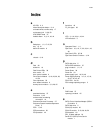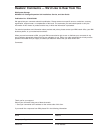54 IBM System Storage DCS9550 1S1 Storage Expansion Unit Installation, Service, and User Guide
Enclosure The chassis assembly which houses the plug-in modules that make up the DCS9550 1S1
Storage Expansion Unit.
ESI/Ops module A unit used to monitor and control all elements of the Enclosure. The ESI/Operators
(Ops) panel is supplied as an integral part of the RS-1602 series Enclosure core product
Hot plugging A device with the capability of being connected to a subsystem without interrupting the
power supplies to that subsystem.
Hot swap Hot swapping is the term used for manually swapping a failed disk unit with a replacement
while the DCS9550 1S1 Storage Expansion Unit subsystem is in normal use.
Hz (Hertz) A frequency measurement unit used internationally to indicate cycles per second.
Initialize To prepare a hardware device for use.
LED Light Emitting Diode. A small light displayed on the cabinet, disk units and power supply units.
Module (power supply, drive, I/O) A module is a power supply, disk drive or electronics unit held in a
carrier that plugs into a bay inside the enclosure. An IBM System Storage DCS9550 1S1 Storage
Expansion Unit can contain sixteen drive modules, two power supply/cooling modules and two SCM
I/O modules.
Operating system The software running the host computer. For example, on PCs it is often Windows
95/98, Windows NT or OS/2 and on Hewlett-Packard machines it could be HP-UX.
Parallel Transmission The transfer of data characters using parallel electrical paths for each bit of the
character, for example, 8 paths for 8-bit characters. Data is stored in computers in parallel form, but may
be converted to serial form for certain operations. See Serial Transmission.
Power Cord Throughout this DCS9550 1S1 Storage Expansion Unit user guide this term is used in
accordance with the preferred US context of: “an insulated flexible electric wire fitted with connectors at
each end and used for the transmission of electrical power to computer equipment.
Protocol A system of rules and procedures governing communications between two or more devices.
Protocols vary, but communicating devices must follow the same protocol in order to exchange data. The
format of the data, readiness to receive or send, error detection and error correction are some of the
operations that may be defined in protocols.
Redundant Not essential.
SCM I/O module (Serial ATA Control I/O module) A plug-in module providing FC-AL channel
external cable interface with 16 (Serial or Parallel) ATA drives.
Serial Transmission The transfer of data characters one bit at a time, sequentially, using a single
electrical path. See Parallel Transmission.
.


















